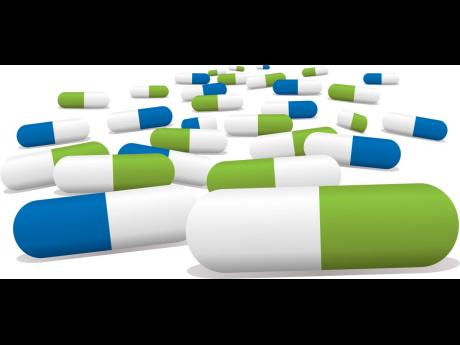COVID-19 stalls HIV response
Seventy-three countries have warned that they are at risk of stock-outs of antiretroviral (ARV) medicines as a result of the COVID-19 pandemic, according to a new World Health Organization (WHO) survey conducted ahead of the International AIDS Society’s biannual conference. Twenty-four countries reported having either a critically low stock of ARVs or disruptions in the supply of these life-saving medicines.
The survey follows a modelling exercise convened by the WHO and the Joint United Nations Programme on HIV/AIDS (UNAIDS) in May, which forecasted that a six-month disruption in access to ARVs could lead to a doubling in AIDS-related deaths in Sub-Saharan Africa in 2020 alone.
In 2019, an estimated 8.3 million people were benefiting from ARVs in the 24 countries now experiencing supply shortages. This represents about one-third (33 per cent) of all people taking HIV treatment globally. While there is no cure for HIV, ARVs can control the virus and prevent sexual transmission to other people.
A failure of suppliers to deliver ARVs on time and a shutdown of land and air transport services, coupled with limited access to health services within countries as a result of the pandemic, were among the causes cited for the disruptions in the survey.
The findings of this survey are deeply concerning,” said Dr Tedros Adhanom Ghebreyesus, WHO director general. “Countries and their development partners must do all they can to ensure that people who need HIV treatment continue to access it. We cannot let the COVID-19 pandemic undo the hard-won gains in the global response to this disease.”
According to data released today from UNAIDS and the WHO, new HIV infections fell by 39 per cent between 2000 and 2019. HIV-related deaths fell by 51 per cent over the same period, and some 15 million lives were saved through the use of antiretroviral therapy.
However, progress towards global targets is stalling. Over the last two years, the annual number of new HIV infections has plateaued at 1.7 million and there was only a modest reduction in HIV-related death, from 730 000 in 2018 to 690 000 in 2019. Despite steady advances in scaling up treatment coverage – with more than 25 million people in need of ARVs receiving them in 2019 – key 2020 global targets will be missed.
According to the WHO, HIV-prevention and testing services are not reaching the groups that need them most. Improved targeting of proven prevention and testing services will be critical to reinvigorate the global response to HIV.
GUIDANCE TO COUNTRIES
The WHO said COVID-19 risks are exacerbating the situation. As such, it recently developed guidance for countries on how to safely maintain access to essential health services during the pandemic, including for all people living with or affected by HIV. The guidance encourages countries to limit disruptions in access to HIV treatment through “multi-month dispensing,” a policy whereby medicines are prescribed for longer periods of time – up to six months. To date, 129 countries have adopted this policy.
Countries are also mitigating the impact of the disruptions by working to maintain flights and supply chains, engaging communities in the delivery of HIV medicines, and working with manufacturers to overcome logistics challenges.
At the International AIDS Conference, the WHO will highlight how global progress in reducing HIV-related deaths can be accelerated by stepping up support and services for populations disproportionately impacted by the epidemic, including young children. In 2019, there were an estimated 95 000 HIV-related deaths and 150 000 new infections among children. Only about half (53 per cent) of children in need of antiretroviral therapy were receiving it. A lack of optimal medicines with suitable paediatric formulations has been a long-standing barrier to improving health outcomes for children living with HIV.
Last month, the WHO welcomed a decision by the US Food and Drug Administration to approve a new 5mg formulation of dolutegravir (DTG) for infants and children older than four weeks and weighing more than three kilogrammes. This decision will ensure that all children have rapid access to an optimal drug that, to date, has only been available for adults, adolescents and older children. The WHO is committed to fast-tracking the prequalification of DTG as a generic drug so that it can be used as soon as possible by countries to save lives.
Through a collaboration of multiple partners,the WHO said it is likely to see generic versions of dolutegravir for children by early 2021, allowing for a rapid reduction in the cost of this medicine. “This will give us another new tool to reach children living with HIV and keep them alive and healthy.”
Many HIV-related deaths result from infections that take advantage of an individual’s weakened immune system. These include bacterial infections, such as tuberculosis, viral infections like hepatitis and COVID-19, parasitic infections such as toxoplasmosis and fungal infections, including histoplasmosis.

